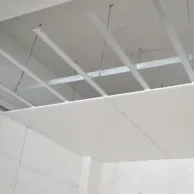Nov . 28, 2024 04:12 Back to list
Fiberglass Ceiling Grids for Enhanced Acoustics and Aesthetic Appeal in Commercial Spaces
The Advantages of Fiberglass Ceiling Grids
In contemporary architectural design, the importance of ceilings cannot be overstated. While often overlooked, the ceiling plays a crucial role in defining the aesthetics and functionality of a space. One of the innovative materials that have gained considerable traction in ceiling design is fiberglass. Among the various applications of fiberglass, the fiberglass ceiling grid stands out as a remarkable solution for both commercial and residential spaces.
Understanding Fiberglass Ceiling Grids
Fiberglass ceiling grids are structural frameworks used to support ceiling tiles or panels. These grids are constructed from fiberglass-reinforced plastic, which offers superior strength, lightweight characteristics, and excellent resistance to moisture and corrosion. Unlike traditional metal grids, fiberglass grids provide an ideal solution for spaces that require durability and lightweight materials.
Advantages of Fiberglass Ceiling Grids
1. Moisture Resistance One of the most significant advantages of fiberglass ceiling grids is their exceptional resistance to moisture. This makes them particularly suitable for high-humidity environments such as kitchens, bathrooms, and areas prone to water leakage. Traditional metal grids can rust over time, especially in damp settings, but fiberglass remains impervious to water damage.
2. Lightweight and Easy to Install Fiberglass ceiling grids are notably lighter than their metal counterparts. This characteristic not only simplifies the installation process but also reduces the structural load on ceilings. For installers, this means less labor-intensive work, and for property owners, it can lead to cost savings during installation.
fiberglass ceiling grid

3. Aesthetic Versatility Fiberglass can be manufactured in various styles, colors, and finishes, allowing for seamless integration with different design themes. Whether the desired look is modern, minimalist, or industrial, fiberglass ceiling grids can cater to a wide range of aesthetic needs. This flexibility makes them an attractive choice for designers looking to create unique interior environments.
4. Durability and Longevity Fiberglass is known for its durable nature and resistance to wear and tear. Unlike metal grids that can dent or warp, fiberglass grids maintain their shape and function for many years. This longevity reduces the need for frequent replacements, leading to lower maintenance costs in the long run.
5. Acoustic Performance Many fiberglass ceiling tiles boast excellent sound absorption properties. When used with fiberglass ceiling grids, they can significantly improve the acoustic quality of a room, making them an ideal choice for offices, schools, and other spaces where sound control is vital. By damping sound transmission and echo, fiberglass installations can create a more comfortable and productive environment.
6. Environmental Considerations As sustainability becomes increasingly important in building design, fiberglass materials have shown promise. Many fiberglass ceiling products are recyclable and contribute to energy efficiency. Opting for such materials in construction projects can enhance a building's eco-friendliness and alignment with green building standards.
Conclusion
In conclusion, fiberglass ceiling grids represent a sophisticated and practical option for modern ceiling design. Their numerous advantages—including moisture resistance, lightweight construction, aesthetic versatility, durability, acoustic performance, and environmental benefits—make them a favorable choice for a variety of applications. As architects and designers continue to prioritize innovation in construction materials, the fiberglass ceiling grid stands out as a proven solution that meets both functional and aesthetic needs. Whether in a commercial or residential setting, the integration of fiberglass grids can significantly enhance the overall quality and longevity of ceiling installations, proving that sometimes what lies above us can be just as important as the floor beneath our feet.
-
Durable Ceiling T Grid Systems | Easy InstallationNewsAug.29,2025
-
PVC Gypsum Ceiling: Durable, Laminated Tiles for Modern SpacesNewsAug.28,2025
-
Pvc Gypsum Ceiling Is DurableNewsAug.21,2025
-
Mineral Fiber Board Is DurableNewsAug.21,2025
-
Ceiling Tile Clip Reusable DesignNewsAug.21,2025
-
Ceiling T Grid Modular DesignNewsAug.21,2025







